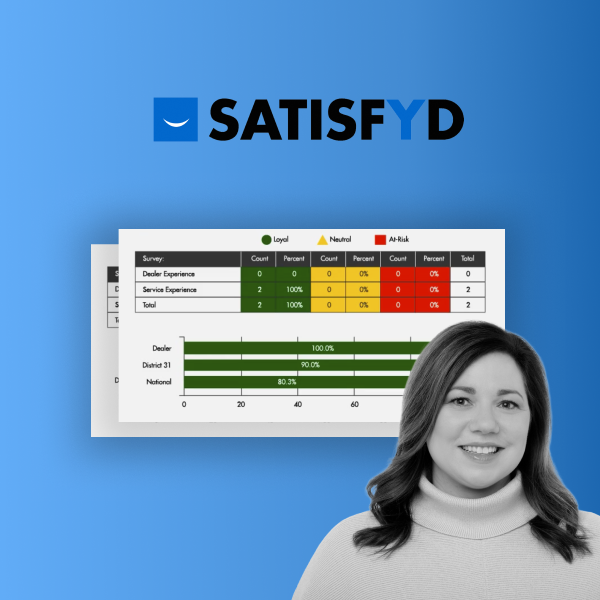Heavy equipment dealers are rapidly shifting away from reactive problem-solving in favor of data-driven business development strategies. To support these efforts, they’re adopting more and more business intelligence (BI) and analytics tools to optimize their operations based on the data they collect and how they react to those insights.
While a clear goal is the first step toward optimizing your business intelligence data, your dealership also needs a comprehensive strategy that supports its BI priorities. If you’re new to the BI landscape, you’ll need to shift your company culture to accommodate new data-driven strategies and initiatives. Finally, your teams need an actionable plan for how to act on that strategy: a business intelligence roadmap.
In simple terms, your roadmap is the guide for how you’ll implement your BI strategy. Good data and goal setting are both essential to success, but your roadmap is what seals the deal, helping your dealership turn high-value metrics into meaningful results.
This post covers several steps you should take in the planning phase to ensure your strategy comes to fruition the first time around.
Identify the Who, What, and Why of Your BI Operations
Whether your dealership is new to the BI landscape or you’ve had a tool in place for decades, it’s all too easy for the details of your BI practices to get lost in the shuffle.

Perhaps you’re still working with the processes you established when you opened your first dealership, even though you operate from over ten global locations today. Alternatively, you may not have an internal BI and analytics team in place yet.
Before you can set clear goals or create an action plan for new features, automated reporting, etc., you need to identify the framework of your BI practice itself:
- Who are your stakeholders, implementers, and target users?
- Which roles have you already filled? Which ones still need to be defined?
- What value does each individual bring to the table?
- Why did you implement a BI solution in the first place?
Answering these core questions — and making necessary changes based on your answers — is the first step toward BI alignment and strategic decision-making.
Align on Priorities from the Start
The most effective strategies are rooted in clear, actionable goals and reliable business intelligence data. And the best way to set these goals is to understand each party’s priorities. Culture, communication, and stakeholder involvement are key drivers for success or failure in BI projects, which means dealerships should open the lines of communication as early on in the road mapping process as possible.

The first party to get involved are key stakeholders. Engage them regularly to identify their priorities and expectations, then monitor each one as it evolves. Be sure you involve every relevant contact around the same time to avoid misalignment or a total overhaul down the line.
You should also take end-user needs into account from day one. There’s nothing more frustrating than building a solution for your dealership based on a stakeholder’s vision, only to discover that it doesn’t perform well for the people who use it every day: like your employees, partners, or clients.
From there, set up regular check-ins to share internal goals, priorities, and constraints as you flesh out your roadmap and begin acting on it.
Create a Product Vision
Once your team is aligned on key goals and priorities, it’s time to consolidate your laundry list of nice-to-haves into a concise set of must-haves.

It may be helpful to frame up your highest priorities by asking your stakeholders or end-users a few overarching questions about your dealership’s relationship with business intelligence data:
- How does our business intelligence data support our organization as a whole?
- Why is BI a focus for our teams?
- What should our solution accomplish in its ideal state?
- What milestones are associated with this central goal?
There are multiple ways to measure your dealership’s success, so it’s essential to define your KPIs and primary metrics before you create a comprehensive roadmap.
Using stakeholder responses and the insights you’ve gathered from various sources, you should start to define a product vision: a clear goal or aspiration that your dealership wants to achieve by optimizing its BI and analytics strategy.
With this goal in mind, you’re ready to start planning the future state of your dealership’s BI processes.
In the on-demand webinar, How to Create Your Business Intelligence Roadmap, TARGIT BI Consultant Anthony Flores walks viewers through the road mapping process step-by-step, offering helpful tips and supportive guidance along the way.
Access the recording now to get all the details you need to build a successful, data-driven BI roadmap for your dealership.




